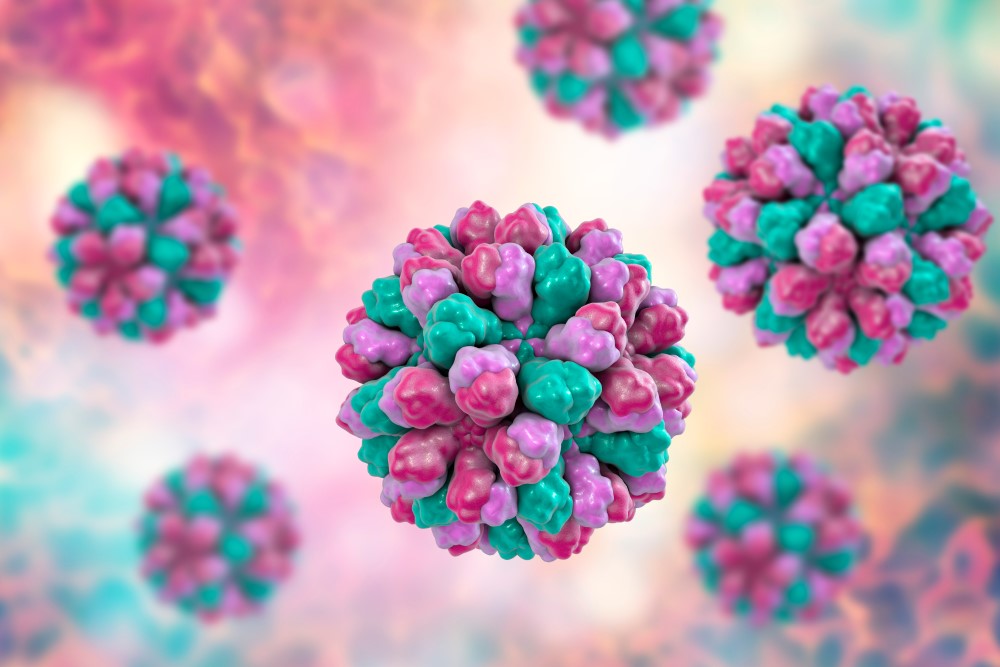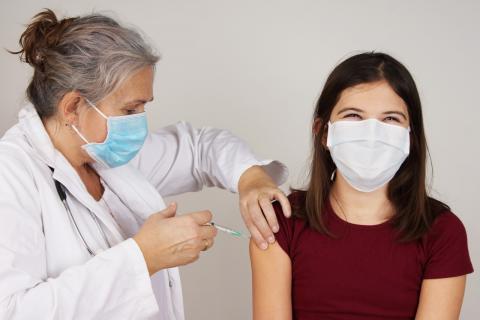Oral norovirus vaccine shows positive results in phase 2 clinical trial
According to the results of a phase 2 trial, an oral norovirus vaccine generated a strong mucosal immune response and even reduced viral shedding in vaccinated volunteers. Signs of the vaccine's efficacy support its potential to address the lack of safe and reliable vaccines against this virus, which is a major cause of gastrointestinal infections worldwide. The results were published today in the journal Science Translational Medicine.

Dolores Fernández - norovirus EN
María Dolores Fernández García
Head of the National Reference Laboratory for Gastroenteritis-Producing Viruses of the National Microbiology Centre - Carlos III Health Institute
Does the press release accurately reflect the study?
‘Yes, in general, it does accurately reflect the study. Although I think it could be clarified, for example, that the study was conducted exclusively in healthy ‘young’ (18-49 years) adults, which is relevant, as young children and older adults are the main groups affected by noroviruses globally. This distinction is important for a cautious interpretation of the scope of the study (see below). Secondly, it could be added that the efficacy results obtained were modest (a 30% reduction in qPCR detectable infection and a 21% reduction in gastroenteritis, the latter not being statistically significant). This is important so as not to lead to an overly optimistic interpretation of the results (see below for contextualisation with other vaccine trials)’.
Is the study of good quality and are the conclusions supported by robust data?
‘Yes, the study is of good quality and its conclusions are supported by a sound methodological design, being a randomised, double-blind, placebo-controlled trial. In addition, robust immunological data, such as IgG and IgA titres and blocking antibodies to HBGA, support the interpretation of the results. However, the study itself acknowledges some important limitations, such as the fact that the evaluation focused only on the GI genogroup. This limits the generalisability of the results, especially considering that most norovirus infections in humans are due to genogroup GII, which is much more prevalent globally’.
How does this work fit with existing evidence?
‘Although the efficacy results of the study can be considered ‘modest’ (a 30% relative reduction in qPCR-detectable infection and a 21% reduction in norovirus gastroenteritis), they are still clinically relevant in the context of vaccine development against norovirus, a virus that has historically presented great difficulties in obtaining effective vaccine protection. Although these levels of protection are below the ideal threshold expected for a vaccine (>50-60%), they are consistent with what has been observed in other phase II studies of norovirus vaccines. In other words, this study provides results that are in line with existing evidence, although not necessarily superior. The main advantage of this vaccine is that it is administered orally, which allows an immune response to be generated directly in the mucosa of the intestine, where the norovirus causes infection. This makes it more effective in preventing replication and transmission of the virus in the gut than injectable vaccines, which do not have the same direct impact on the gut’.
Have the authors taken into account confounding factors, and are there important limitations to consider?
‘In general, several major challenges remain in the development of norovirus vaccines, especially with regard to the need to achieve long-lasting protection, demonstrate efficacy in different age groups, and address the high genetic diversity of the virus. In this study, several of these key issues remain to be addressed.
For example, the trial focused exclusively on healthy adults aged 18-49, leaving out young children, who are one of the main risk groups globally. It also did not include older adults (over 65 years), another group particularly vulnerable to severe forms of norovirus gastroenteritis, in whom an effective vaccine could have a high impact in terms of prevention and reduction of hospitalisations. Therefore, although the results are promising, the safety and efficacy of this vaccine remains to be evaluated in both paediatric and older adult populations.
The vaccine evaluated is monovalent, meaning that it was designed to protect against only one type of norovirus, specifically genotype GI.1. However, genotype GII.4 has been the most common genotype in recent years, which could make this vaccine less effective against norovirus infections. Studies suggest that multivalent vaccines, which include different genotypes and genogroups (GI and GII), would offer broader protection against different types of noroviruses. This limitation is recognised by the researchers themselves.
A key aspect or limitation to consider is also the duration of follow-up, which in this study was relatively short, only about two months. In Phase II trials of norovirus vaccines, although designed primarily to assess safety and initial immune response rather than long-term protection, follow-up is usually somewhat longer than the two months in this study, typically lasting at least six months or more. In this sense, the follow-up time in this study is not long enough to accurately assess the duration of protection over more than the very short term, so it is important to treat the data with caution. In addition, it is important to note that immunity to norovirus is often short-lived, making longer follow-up time even more relevant.’
What are the implications for the real world?
‘This study represents an important advance in norovirus vaccine development, demonstrating that an oral formulation can induce robust immune responses (at least in the short term) and offer partial protection against infection in healthy adults.
However, it should be noted that its usefulness in the paediatric and older adult population has not yet been evaluated. This represents a relevant limitation, given that they are one of the most vulnerable groups affected by this infection worldwide. Therefore, future studies should focus on these age groups to determine the efficacy and safety of the vaccine in the real-world population that would benefit most from its implementation.
It is also important to note that genogroup GII causes the majority of norovirus infections in humans, whereas the vaccine used in this study is formulated with genogroup GI. This has important implications, as the vaccine may not be equally effective against the most common infections caused by genogroup GII. Since genogroup GII is closely associated with a large proportion of norovirus outbreaks in different parts of the world, the effectiveness of the vaccine may be limited when faced with infections caused by this genogroup rather than GI. This reduces the direct applicability of the results obtained in this study to the actual global epidemiological reality, as it cannot be assumed that the vaccine will have the same level of protection in the most common cases of norovirus infection.
Furthermore, as with the oral rotavirus vaccine, which has been shown to be significantly less effective in low- and middle-income countries (LMICs) compared to high-income countries, it would be reasonable to assume that factors such as malnutrition, enteric co-infections, altered microbiota or sanitary conditions could affect the efficacy of this oral vaccine in similar settings. In addition, the study was conducted in a controlled setting, and does not include data from vulnerable LMIC populations, where norovirus burden and genotype diversity is higher and the need for an effective vaccine is more urgent.
In summary, therefore, this vaccine represents a significant advance in norovirus vaccine development. A remarkable aspect of this vaccine is that, being oral, it not only facilitates the induction of a mucosal immune response (which is more difficult to achieve with traditional injectable vaccines), but also makes it easier to deliver and administer, especially in resource-limited settings such as LIMCs. However, it will be crucial to test it in these settings and with key populations, such as children and older adults, who are more vulnerable to norovirus infections. This will allow us to better assess its public health impact in the real world.
- Research article
- Peer reviewed
- Clinical trial
- People



